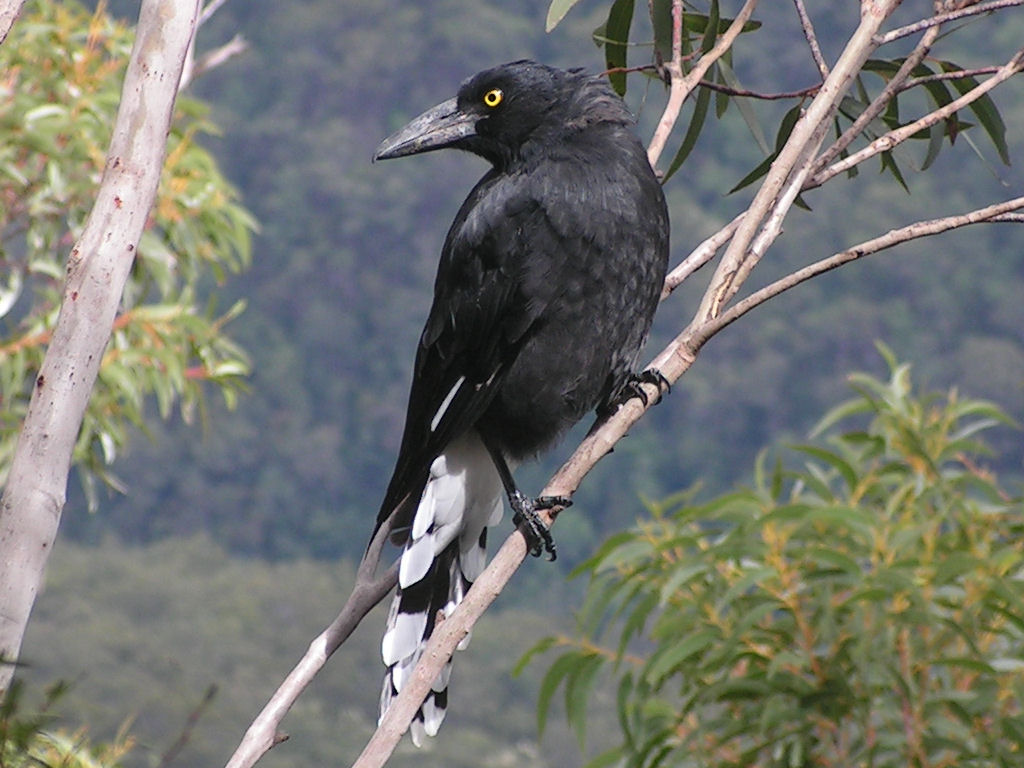The Pied Currawong (Strepera graculina) is one of the most commonly seen and heard birds in the areas where it lives, and it is sometimes mistaken for the Australian Magpie (Gymnorhina tibicen), which is closely related (it is in the same family and subfamily). The Currawong, however, has less white markings on it, it does not attack, and it’s larger than the Magpie. Many people confuse the two species because of their similar appearances and habits. Learn about this Australian bird with these interesting facts about the Pied Currawong!
What is the Pied Currawong?
The Pied Currawong is a large blackbird with white markings on its wings and tail. It is found in forests and woodlands in eastern Australia, from the Blue Mountains in New South Wales to Queensland and Victoria. The Pied Currawong is sometimes mistaken for the Australian Magpie, which is closely related (it is in the same family and subfamily).
There are 3 types of Currawong, grey, pied (Strepera graculina), band lack.
The Currawong is larger, has less white markings on it, and it does not attack. The Blue Mountains of NSW are an ideal place to spot these birds as they have been recorded there often.
They also resemble crows and ravens.
Sounds: www.xeno-canto.org/species/Strepera-graculina
Life Cycle
The Pied Currawong is most active during the day, although it will also call at night. The Currawong nests in trees, and the female lays three to five eggs. The young birds leave the nest after about six weeks. They can fly, but they are still quite weak and need to be fed by their parents for up to a month before they can go out on their own. After about two months of independence, juveniles start joining flocks of older Currawongs who have established a territory in the mountains near Sydney.
Curious Facts
These birds are omnivorous, eating both insects and fruits. The Pied Currawong is also known to steal Shiny objects. In the Blue Mountains they were seen stealing metal roofing from a house and this has been reported in other areas as well. It nests high up in trees, on cliffs or in rock crevices so it can be difficult to spot their nests if you don’t know what you’re looking for.
They are one of the only birds that makes no noise at all when incubating their eggs, which can make it hard for them to defend themselves against predators like owls or snakes that hunt by sound.
Moreover, they are known for their special comical style of flying. They fall down from branch to branch as opposed to flying around trees. Found exclusively in Australia, currawongs only migrate from shrubland to cities during the autumn and winter season. They can be identified by their bright yellow eyes, crow-like beak, and long tail feathers.


